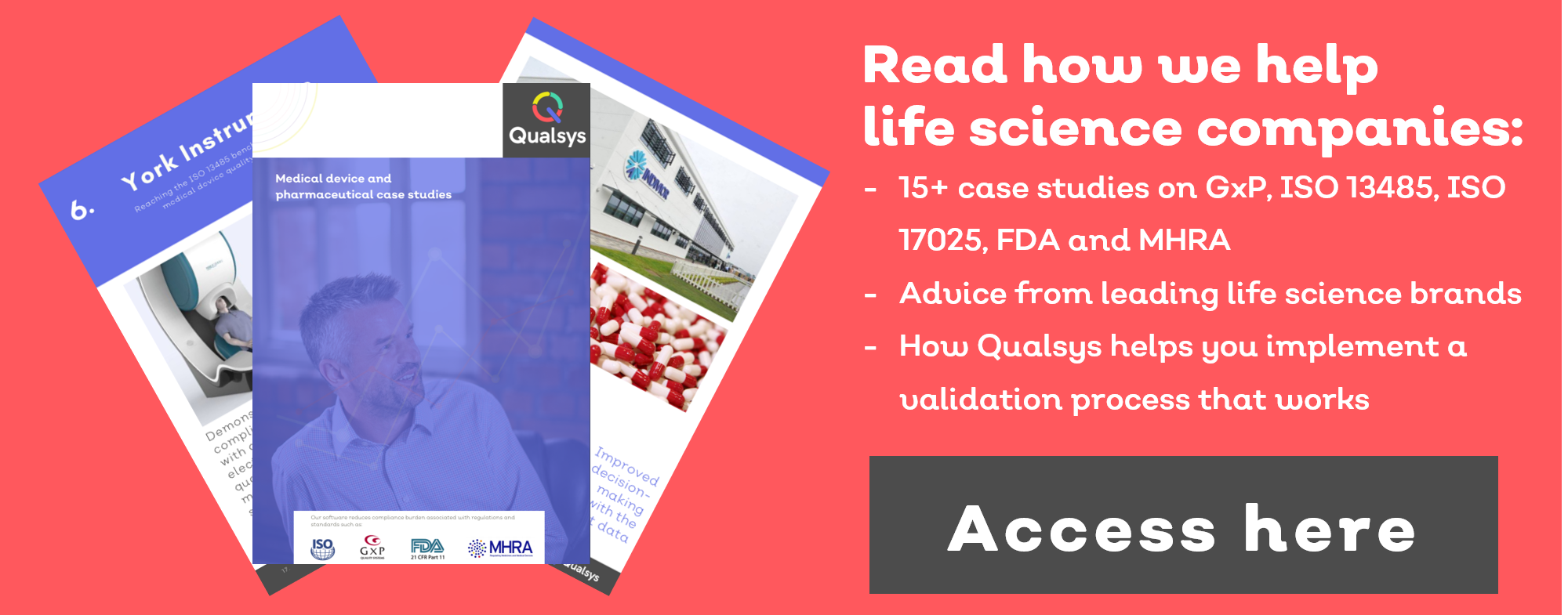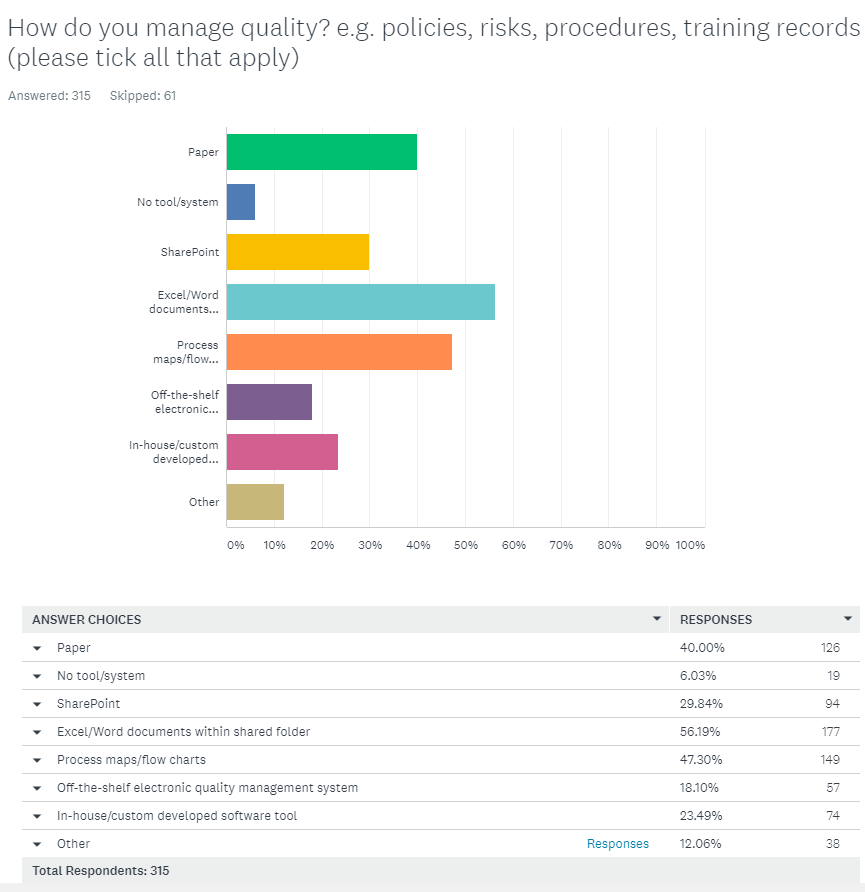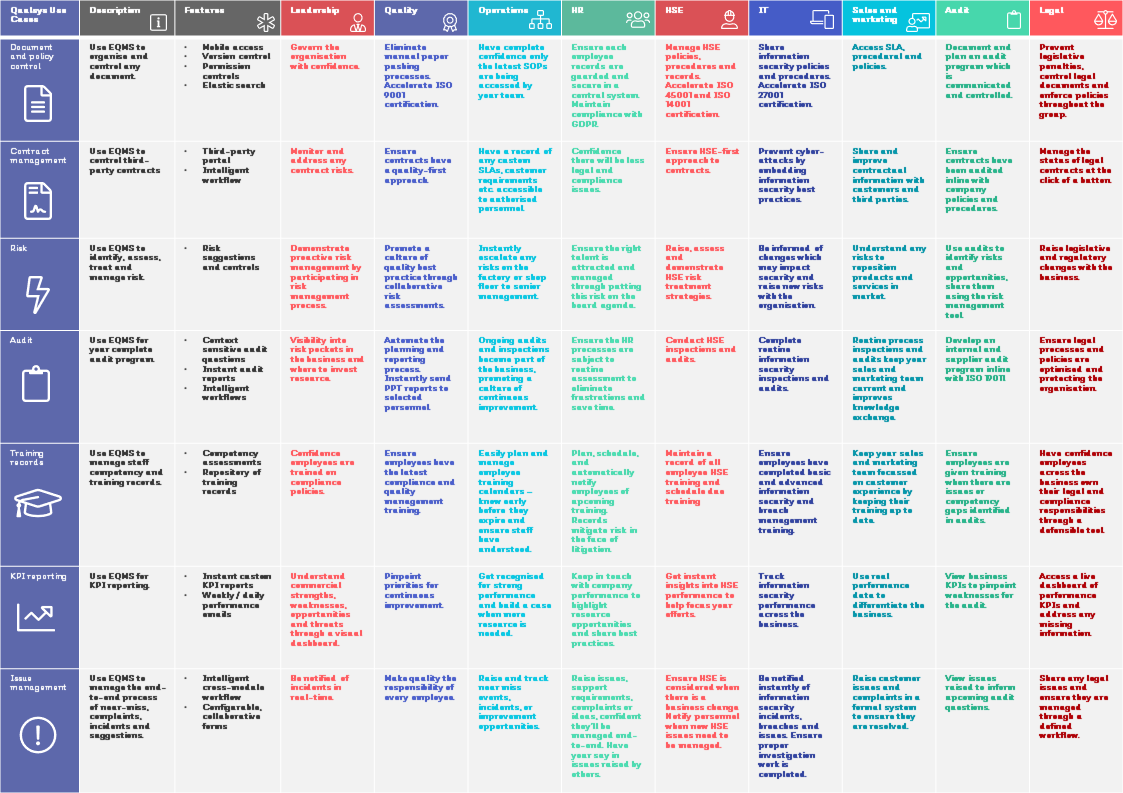Want to contribute to this article?
Qualsys's modular software suite is designed to slice the cost of compliance and embed and simplify quality processes.
So it's no surprise that a large percentage of our customer base sits in the stringently regulated life science sector.
We asked three of our customers - York Instruments, Merz Pharma and DYSIS Medical - to share their tips, examples and advice for implementing and applying an electronic quality management system.



Stewart Wilson, Quality Manager, York Instruments
York Instruments are in the final stages of bringing their MEGSCAN magnetoencephalographic Class II medical device to market after forming in 2016.
Quality Manager Stewart Wilson was tasked with constructing a quality management system from scratch to enable compliance with:
- FDA 21 CFR 820 (since the first installation of MEGSCAN will be at the University of Texas Southwestern Medical Center in Dallas)
- ISO 13485
- ISO 9001 for potential future projects
Stewart discusses his sourcing, implementation and application of Qualsys's document and change control modules to help him achieve his objectives here:
Stewart recommends:
- Starting by 'teasing out' which areas of the business you want to incorporate into your electronic quality management system: York Instruments operates a concerted design and development group of physics, electronics, mechanical and software teams - so consideration of how to harmonise the quality system accordingly was Stewart's first step.
- Considering your specific needs: York Instruments' software team, crucial to the development process, operated on Linux systems. Stewart preferred to source an electronic quality system which would integrate with the team's pre-existing tools to make quality and compliance simpler.
- Keeping things simple: Stewart found software systems from previous roles tended to be overly complex and generic. Building a simple groundwork and adding to it over time with a user-friendly system is 'the key' to success for Stewart.
Other systems have been overly complex and never seem quite tailored to your needs. Whereas with Qualsys's system, I kept things nice and simple. That is the key. Make it as simple as you can to begin, make sure you're happy with the basic system you have in place, and then work it and use it to its full advantage. If you want to bring in extra things later on, do so. That's my approach and it's worked really well for us.
Manav Patel, Scientific Advisor, Merz Pharma
Frankfurt-based Merz Pharma is a pharmaceutical giant working in areas from over-the-counter dermatological creams to Alzheimer's treatment.
Merz is required to comply with a range of EU 'Good Documentation Practice' requirements. GDocP comprises:
- Defined specifications and procedures for all materials and methods of manufacture and control
- Documents to inform personnel what to do and when to do it
- The necessary records for product release to market
- Documented evidence, traceability and audit trails
- Availability of data for validation, review and analysis
Merz selected Qualsys's document control module and are shortly rolling out training and CAPA management modules to make their quality management system even stronger.
Qualsys's software has allowed all SOPs to be uploaded to a validated electronic system. Previously we had a paper-based version. This way will allow much smoother tracking and dissemination of controlled documents.
- Being fully conversant on your software project from the beginning, to ensure all staff understand the core goals and aims
- Attending 'very useful' on-site training at Qualsys's Sheffield headquarters to gain a practical understanding of the system

Manav noted that Qualsys's modules have brought improvements in:
- Managing validation
- Audit preparation
- Process speed and consistency
Kallia Argyriadou, Technical Support Engineer, DYSIS Medical
DYSIS Medical designs, develops and manufactures imaging systems for detecting cancerous and pre-cancerous lesions.
DYSIS opted for Qualsys's GRC software to simplify compliance with:
Technical Support Engineer Kallia Argyriadou shares how DYSIS applied various Qualsys software modules to manage various areas of life science quality control;
- Applied complaints management module for recording, tracking and addressing complaints and non-conformances
- Implemented document control module for secure storage of controlled documentation
- Applied training records management module for verification of competence and training of employees
- Save time
- Deliver a consistent approach
- Ensure constant audit readiness
Next steps
We asked our life science readers to share their governance, risk and compliance tips too. Hear their thoughts here.
Or read how Sodexo, Synexus, Nanopharm and others use Qualsys's software to manage their quality by accessing our life science case study booklet here:









Share your thoughts on this article